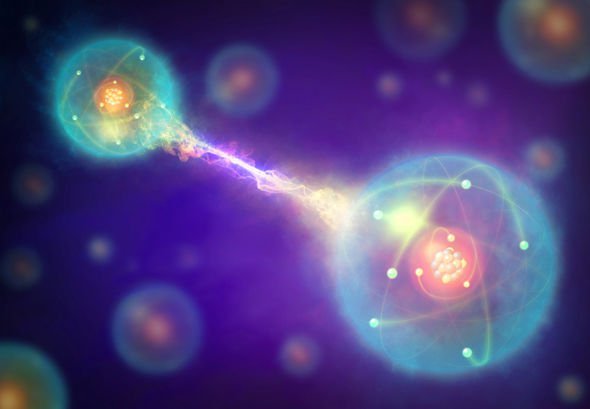What is the Angel Particle?
In 1928, physicist Paul Dirac made an extra prediction: each and every one of the fundamental particles of the Universe has an "antiparticle", a twin identical to them but with opposite electrical charge. So that, when a part meets its antiparticle, both are annihilated, producing a brief flash of energy. Just a few years later, the first antimatter of matter, the positron (opposed to the electron), was discovered, and antimatter quickly became part of popular culture.
However, in 1937, another brilliant physicist, Ettore Majorana, gave a new twist to the predecessor situation than in the case of particles known as fermions (including the proton, neutron, electron, neutrino, and The quark), there are also their own antiparticles.
Now, eighty years later, a team of physicists has managed to find the first evidence that the "marjoram fermions" really exist. The finding came after a series of experiments with exotic materials in laboratories at the University of California, in collaboration with scientists at Stanford University. The results of the experiments, led by professors Jing Xia and Kang Wang, following the step by the plan elaborated by Shoucheng Zhang, of Stanford, just published in Science.
"Our team predicted exactly where to find the Majorana estate and what it should look for as evidence," Zhang explains. "This discovery of completion is one of the most intense pursuits of fundamental physics, one that has lasted exactly 80 years."
For the physicist, and the fact that the famous fermion seems more theoretical than practical, its finding could have concrete implications for building more stable quantum computers in the future. The specific type of Majorana's part observed by researchers is known as "chiral fermion", because it moves along a one-dimensional path and only in one direction. And even though the experiments to bring it to light were extremely difficult to conceive, prepare and carry out, the sign it produced was clear and resounding, according to the researchers.
How did they find out?
In their experiment, the membranes of two materials bodies (a superconductor and a magnetic topological insulation) were stacked by researchers in a pre-cooled vacuum chamber and sent after an electric current through them. The upper membrane was a superconductor, and the bottom of the topological insulation, which conducts the current only through its surface, but not through its center. By joining the membranes, physicists obtained a topological superconducting insulation, where electrons ran a two-axis length on the surface of the material without resistance, such as cars on a highway.
Zhang had the idea of
"retouched" the topological insulation by adding a small amount of magnetic material, which made it possible for the electrons to flow in one direction along one edge of the surface and in the opposite direction on the opposite edge . The researchers then swept the membrane with a magnet. That made the flow of electrons slow, stop and change direction.

These changes were not gradual, but came in the abrupt and concrete steps, like the identical steps of a ladder. At a certain point in this cycle, Majorana particles emerged, emerging in pairs of the superconducting layer and moving along the edges of the topological insulation, just like the electrons.
One member of each pair was diverted from its path, thus enabling scientists to easily measure the flow of individual particles that continued to advance. Like the electrons, these particles also slowed down, stopped, and changed direction, though at steps that were exactly half as high as those of electrons. These "half steps" were precisely the evidence that researchers were looking for. The scientists pointed out that they did not exactly observe the particles of Majorana, but "the excitations in a material that behave like the same."
And although the team defines its experiment as "irrefutable evidence" of these unusual particles, it is unknown and they can occur naturally in the universe. The authors point out that the existence of Majorana particles can trigger the technological revolution of quantum computers in the future, much more and more powerful than the current. A single qubit, or quantum bit, of information could be stored in two separate closets of Majorana, so in one of the interferences, however, the other would continue to hold information. A whole guardian angel
For the time being, the physicist has merely suggested a name for the fermion Chiral Marjoram that he and his team have managed to discover: the "angel particle," in reference to the best seller Angels and Demons, in which a secret brotherhood plans to destroy the Vatican with a bomb whose explosive power comes precisely from the annihilation of matter and antimatter. Unlike the book, says Zhang, in the quantum world of Majorana fermions there are only angels, not demons.
I would like to enjoy these computers :). Thank you for reading